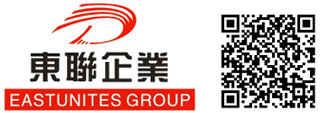My country leads the official implementation of the first ISO silk international standard
On May 10, 2014, the ISO International Standardization Organization officially released the ISO15625:2014 International Standard for "Electronic Testing Methods for Raw Silk Defects and Strips". This is the first silk international standard formulated by our country and the first international standard in the ISO silk field. It is a major breakthrough in the internationalization of China's silk standards and marks the transformation of China from a "silk power" to a "silk power" A solid step has been taken to realize the long-cherished dreams of several generations of Chinese silk people.
Since the formal establishment of this international standard in 2010, with the care and vigorous support of the National Standards Committee, the Cocoon and Silk Office of the Ministry of Commerce, and other ministries and related departments, the China Silk Association led the organization of the National Silk Standardization Technical Committee and Zhejiang Entry-Exit Inspection The Silk Inspection Center of the Quarantine Bureau, Zhejiang Kaixiya International Co., Ltd., Zhejiang Silk Technology Co., Ltd., Suzhou University and other scientific research institutes and testing unit experts form the Chinese project working group, with Italy, Switzerland, France, South Korea, India, Japan, Experts from eight countries including Germany and Kenya jointly tackled key problems and carried out a lot of fruitful scientific research. The project successfully completed the seven development phases of the tasks specified in the ISO guidelines, successfully organized and convened five ISO working group meetings, and carried out a large number of international precision comparison tests and raw silk comparison tests and analysis, writing Published a number of research reports and papers, and revised and improved the draft standard many times, so that the draft standard was approved by a high number of votes in a total of five rounds of ISO/TC38/SC23 member countries, winning the experts of national standardization organizations Affirmation and praise.
China is the world's largest country in the production and trade of cocoon silk, and raw silk is one of the few resource commodities that has long dominated the international market. In recent years, the world's electronic information technology has developed rapidly, but for a long time the quality inspection of raw silk in various countries still relies on traditional manual visual inspection. There are shortcomings such as low inspection efficiency and inability to obtain raw silk quality objectively, which has become an important bottleneck restricting international raw silk trade. This international standard innovation adopts advanced electronic equipment for detecting raw silk that integrates capacitance, photoelectricity, and multiple spindles. It uniformly regulates the technical indicators of raw silk defects and unevenness detection test methods, classification and calculation of raw silk defects, and fills the world raw silk. The technology gap in the field of electronic testing provides new ideas and directions for the next step in the development of intelligent electronic testing systems and evaluation of raw silk. The promulgation and implementation of this standard has provided important technical guidance and international general guidelines for the world silk industry to carry out raw silk quality electronic testing. It will accelerate the establishment and improvement of the international raw silk quality electronic testing standard system with China's technical characteristics, and promote the world raw silk electronic testing. The development of technology, enhancing the international voice of domestic silk enterprises and products, promoting the economic and trade exchanges of silk between countries, and promoting China's realization of the strategic goal of "silk power" are of historic milestone significance.

 Hotline:
Hotline:

 0512-63606777
0512-63606777